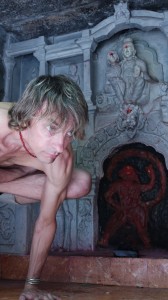 This weekend David Garrigues will be teaching at BAYoga Studio in Berkhamsted, near London.
This weekend David Garrigues will be teaching at BAYoga Studio in Berkhamsted, near London.
David Garrigues is the director of the Ashtanga Yoga School of Philadelphia. He is one of a few US teachers certified to teach Ashtanga Yoga by Sri K Pattabhi Jois. As an Ashtanga Ambassador he bases his teachings on the idea that ‘anyone can take practice’ – a core idea in the teachings of Sri K Pattabhi Jois.
We asked BAYoga students to submit questions for David and we spent an evening chatting on Skype. I asked him students’ questions and added a few of my own. Here are his answers. Enjoy…
Cathy’s question: How did you discover yoga?
DG: It was when I was 16 in my first job. I started washing dishes in a diner in Seattle. In these restaurants there’s always the eccentric dish washer guy who’s older and gone off the path of life and so they have to be a dish washer!
There was one of these fellas at the diner and he was into different stuff: anarchy, books, UFOs, philosophy and yoga.
He took me to this local park one day and we did the sun salutations. Immediately I loved it. I started doing it by myself and I’d only do it outside. It felt really elemental, to be outside saluting the sun. It felt right to me.
I lived in an apartment by the beach with my Mom and I’d go to the park near us and I’d do it every day at sunset.
I kept doing that for ten years before I actually got to a yoga class. And when I did finally get to one, it was because I was running a lot and I got real stiff.
I loved the class and it wasn’t long before the yoga replaced the running. I went to this class regularly in Seattle with a teacher called Marie Svoboda and it was in her studio that I got hold of a tape of Guruji (Sri K Pattabhi Jois) teaching ashtanga.
When I saw that, I was completely hooked. At around the same time, I saw in the Yoga Journal that he was coming to California on a tour and so I booked to go spend a month in Santa Monica taking led primary with him in 1993. I was 28 years old.
The experience was completely mind blowing. I followed him for two weeks to Maui, Hawaii, and then a year later I went to India to start my serious study with him in Mysore.
I ask: Who or what inspires you?
DG: Although he’s no longer alive, Guruji still inspires me. His voice, his person and what he taught me lives inside me and that totally inspires me.
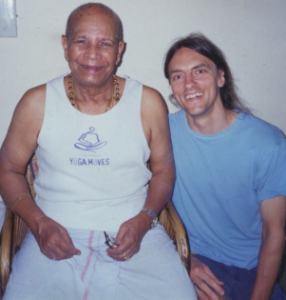
I’m inspired by anyone who is serious about their spiritual path. Yogis, BKS Iyengar, Peace Pilgrim and anyone who’s fully devoted to living the path.
Creative people inspire me – people who truly looks inside and find a way to express themselves.
It’s a funny thing but some of my past friends have really inspired me. The bassist in Guns and Roses – Duff McKagan – he was a good friend and his whole way of being is inspiring. He’s so positive and he’s made such a great life for himself.
There are so many people that just see the possibilities for life and go for it. They make it good for themselves and good for others.
There’s so many areas of need in the world – the environment, animals. Anyone who’s devoting themselves to those areas inspires me.
My students are also so inspirational. They’re so amazing. Their practice inspires me. Their whole life, how they manage to find time to practice and do everything else they have to do in their life.
Last but by no means least, my partner Joy inspires me. She’s more right in the front lines of inspiring me every single day. How hard she works and what she values and the connect we have, it’s so inspiring.
April‘s question: What do you think about when you practice?
DG: I try to remain absorbed in a few techniques so I try to eliminate all thinking. Or I limit my thinking to the ‘allies’ or the root techniques. These are pranayama (conscious breathing), vinyasa (positioning), bandhas (locks), drishti (gazing), and dhyana (meditation). I work to stay directly absorbed in these.
I also contemplate the greater context, the image of self and try to realise or have a wisdom about that. A contemplation of eternity, and beauty are really large. They form the background. That’s the ultimate experience that’s beyond thought.
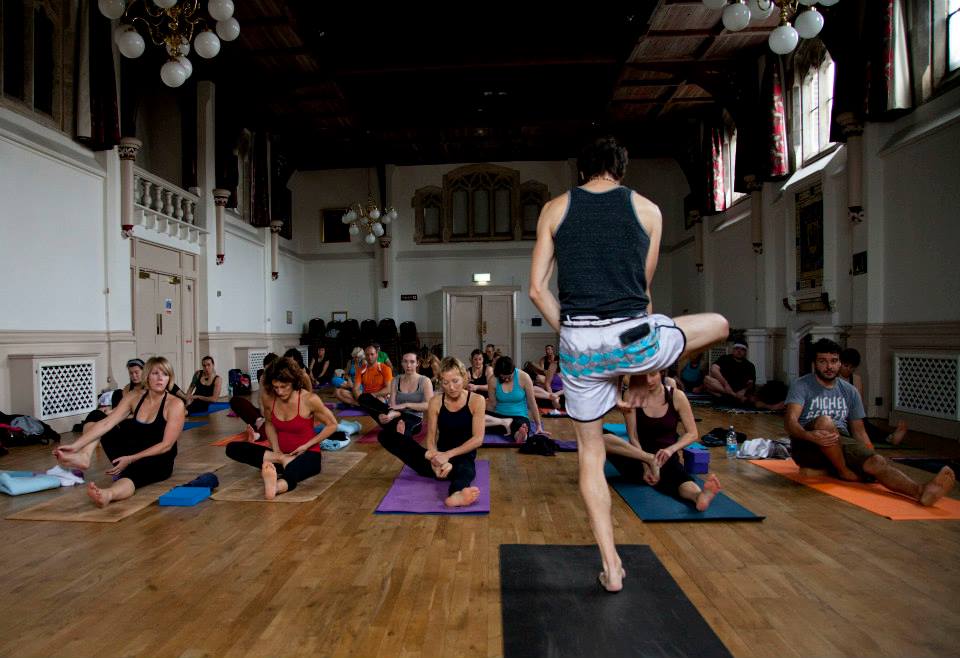
Jo‘s question: Does the ashtanga practice ever get easier?!
DG: Putting it in those terms kind of misses the point. The concept of ‘easy’ goes with ‘hard’ and those are opposing terms. In Sanskrit they’re called ‘dvandvas’. They’re opposite pairs.
Asana gives you the ability to not be harangued by opposites. It’s like, “So what! It’s hard or it’s easy” and that ceases to lead your thinking or where you’re orienting yourself from.
So that might seem like dodging the question because it’s a difficult place to be or taking a stand point from a high place but you need to contemplate those places – even when you’re not there because eventually you’ll be there.
If you’re in the mindset of ‘this’ versus ‘that’, then no, the practice does not get any easier! But it doesn’t matter because you’re on the path of transcending that whole way of thinking.
And of course the opposite of practicing is not practicing and then it’s even harder. You find that out fast by dropping your practice!
Jo’s question: How do you get through a home practice when your brain is saying go and drink coffee?!
DG: Well there’s a couple of things.
You might need to go drink coffee! You don’t want to be divided in yourself in terms of what’s important to you and how you want to be spending your time. You have to carefully observe that dividedness and resolve it.
Or put the coffee thoughts aside.
Or you can change things behaviourally. So for instance, I never feed my cats before noon. If I fed them at 7am, then I know that at 5.30am that would be when they’d start wanting food.
They’d be waking me up at 5.30am so instead I back it out. So it’s fine for me that at 10.30am they start bothering me for food.
So if you’re really thinking about coffee, then maybe you should wait longer to have it. So your practice will be done before you start wanting it. You’re anticipating that kind of thing.
If you’re used to drinking coffee at 9am and you start practicing at 8.30am, then that’s a problem. Maybe start drinking coffee at midday and make room for your practice.
Make it a habit to do your practice at the same time and clear out everything else so your mind doesn’t get distracted by wanting to go do something else.
Kev‘s question: What does going to study in Mysore give you that you can’t get from normal Mysore classes?
DG: Well, it gives you an experience of the roots of ashtanga yoga and the opportunity to be within the community that exists today. People are very serious about their study and that’s a nice environment to be in.
The feeling in the room, and Sharath and Saraswati are the direct line from Guruji and they’re carrying on the tradition. There’s a lot to benefit from having that experience and feeling that.
And the city of Mysore is amazing. Maybe it’s the best city in India in many ways. It’s beautiful and the experience of India itself.
The thing is, now that Guruji is no longer alive, the practice can tend to get more and more removed from that source. It can lose track of some continuity and the roots of the practice. Going to Mysore can help to personally give you the sense of those roots and connect you to the practice more.
It’s not essential though.
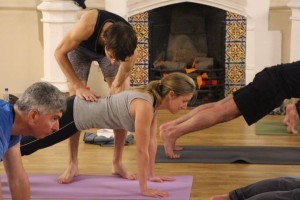
Martin‘s question: How can I work towards a stronger connection to mula bandha during my practice?
DG: The allies are important: pranayama (conscious breathing), vinyasa (positioning), bandhas (locks), drishti (gazing), and dhyana (meditation).
It’s all interconnected. So when you study breathing, it leads you to bandhas. When you study alignment along the central axis, again that leads you to bandhas. When you study the foundation of the asana, it brings you to mula bandha. Every technique contributes to that.
I see the practice as a labyrinth and mula bandha is further in the interior of that labyrinth. And so to start on the outside and start to talk about mula bandha is challenging. You got to walk through the labyrinth and work on the techniques and then mula bandha is easier to make sense of and work with.
One thing is to have a very dynamic centre. This area of the body has got to come alive. Your movement, your breathing, your awareness and consciousness emerges and returns to that centre.
And also that you consider the two words as mantra. ‘Mantra’ means mind instrument. Mantras are for japa (repeating) and so what is this ‘mula’?
Mula is foundation or first basis or root or earth and so contemplate what that actually means in terms of your physical body and your psychology. What is the root of my mind?
‘Bandha’ itself has many meanings and that’s why it’s used for japa because you have to think of it over and over with all its different meanings. It’s to shut, to lock, to close, to redirect.
It’s an energetic thing and it’s about shutting off the energy and redirecting it. It happens at the base, at the pelvic level. You have to contemplate what that actually means.
Olena‘s question: At what point into your ashtanga practice did you start pranayama (beyond ujjayi) and did you notice it having any effect on your asana practice?
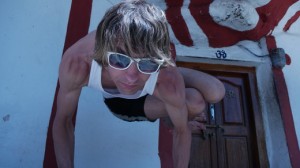 I feel really strongly about this subject and that’s why I’ve produced a double DVD and book on pranayama.
I feel really strongly about this subject and that’s why I’ve produced a double DVD and book on pranayama.
The first DVD contains exercises for anyone. You can work on these exercises from the day you start practice. So you can begin a study of breathing right away that’s not within the practice. I would not do it instead of the asana practice but you can do it right away.
Disc two teaches the ashtanga pranayama sequence and there’s five pranayamas in that sequence. That I recommend waiting for. It’s variable, but I would say 3-5 years of practice before taking it up but it has an incredible effect on your practice.
Breathing is the link between the body and the mind, and the mind and the spirit. To learn to centralise yourself in your breath in the asanas kind of is the whole show. That is it. The breath is also known as ‘elusive’ as it’s so challenging to stay with it.
Pranayama allows you to see where your breathing fits. The breathing is actually meant to create the asana. You create the positions and so you notice a big difference when you separate and isolate the breathing.
When you learn the ashtanga pranayama sequence you add kumbhaka (retention) and that gives you a whole new experience of stopping the body and the breathing and noticing what happens in that interval, in the space when those things are no longer happening. It provides you with a whole lot of adventure.
Niki‘s question: How do you feel about the use of props? Should we cast them aside and find ways of adjusting the posture to our body’s limitations or do you feel they have a place in helping understand the asanas?
DG: Props are really important and valuable. There’s a whole art in the study and the use of props and so they’re used very thoughtfully and economically.
Sometimes they’re not necessary and they can cultivate a laziness. A certain vigilance is needed when you use them. I have a saying: props are like the dhow – the one begets the ten thousand things. One begets two, and two begets three.
So you use one prop and all of a sudden you need a second. And then that second leads to a third. And so you have to be very judicious in your use of props.
But on the other hand, to me, there’s a whole reorientation of thinking needed about what constitutes a posture or a final point of a position.
There’s so many factors that go into making a limitation. There’s injury, age, genetics, level of commitment, and asana skill.
So there’s so many variables but we tend to get fixed on one idea of what the asana should look like and then we cram our body into that shape no matter what. That is a dangerous and unyogic method.
So when you let go of that, when you work with the principles of alignment and open up to what the shape is trying to be or what you’re trying to express through it, then it will automatically bring in props at some point because they just fit in terms of bringing out the meditative quality, or aligning the body, or being able to breathe, or feeling a certain thing.
It’s important to remember that if we have injuries, we need to work with where we’re at. Binding, feeling like we have to drop back, grab our ankles – you know it skews in a harmful way and it leads to injury and a shortsighted way to see things.
Your practice is for life and if you include the possibility of props, you extend the life of your practice and that is in your interest.
I ask: How does the physical practice of yoga make you feel?
DG: I mean there’s nothing like it. Incredible! It’s incredibly hard work and discipline and a challenge but the feeling inside the body is unmatched. It’s a funny term but it’s bliss. It’s ananda.
But it takes a lot of suffering to get to that. But asana is everything. It gives you physical health, it clears your mind, it’s very subtle. You get a mastery over the body, the senses, the breathing. Like, wow!
It’s the most incredible set of techniques and it offers you total freedom for your whole life. I cannot imagine not doing asana. To me, that’s just pretty much unimaginable. Even though there’s so much sacrifice and renunciation and discipline that it asks for. It’s still unmatched.
I ask: What makes you happy?
DG: Practicing yoga makes me happy. Teaching yoga makes me happy. Joy makes me happy.
I’ve got three cats now and they all make me happy. We’ve got Bunny, Karmakazie and Lexster. It’ll be hard to leave them when we visit Europe.
Other things that make me happy: reading great books, seeing great movies and listening to great music.

I ask: This is the second time you’re visiting Berkhamsted. What do you like about the town?
Well, it’s a very cute English village. Just the feeling, the landscape, and the people. Everyone’s been very welcoming and eager to learn and enthusiastic. You guys have a good sense of humour and I like that.
And there’s a great host there: Cathy! She made us feel welcome at BAYoga Studio and she is an excellent person. She was eager to have me come and that helped! It feels like a good community to share yoga with.

I’m aware that I offer a slightly unique approach. There’s some traditional things but I emphasise some particular aspects. It’s not exactly ordinary and I felt that people were open to that and eager to learn from me. And that’s always exciting.
I ask: What do enjoy about visiting the UK?
Well, London for one thing! We’re looking forward to spending some time there. I think I’d like to answer that question in a few years as I think we’ll need a while to explore the place as much as we’d like to.
But I think the UK is an amazing place. There’s a lot of beauty, culture and history. In my experience, the ashtangis there are a good bunch of people.
Thank you David. See you at the weekend!
For more information about the workshop, visit the BAYoga Studio website.
If you’re not already familiar with them, David’s Asana Kitchen clips on YouTube are fab. Check them out.

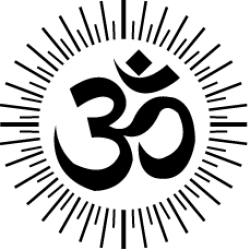
Great article Clare! Thank you for sharing with us David! See you at the weekend! x
Great interview Clare, thanks for posting it.
Thanks Claire, great article + lovely to meet you at the weekend!
Cx